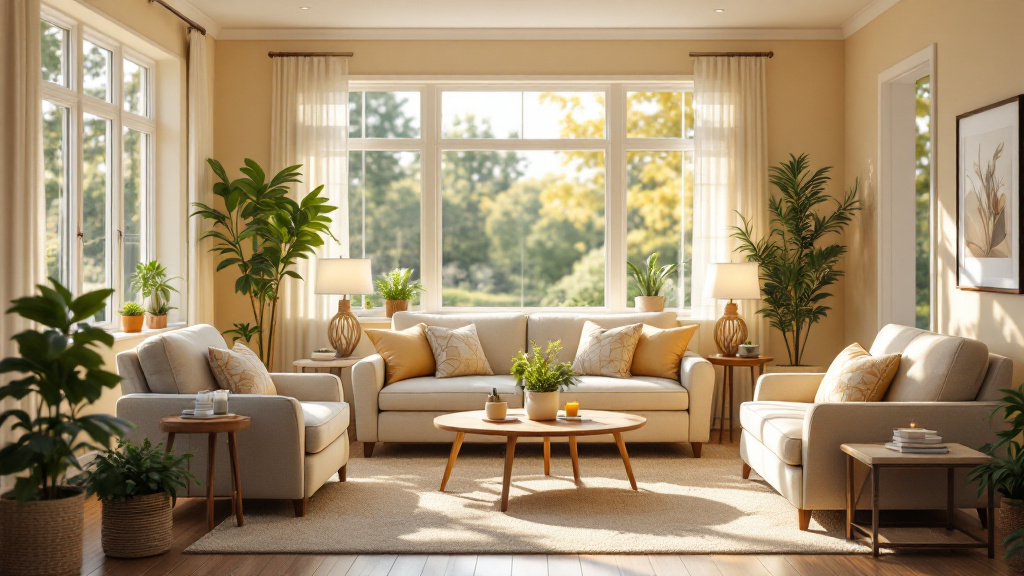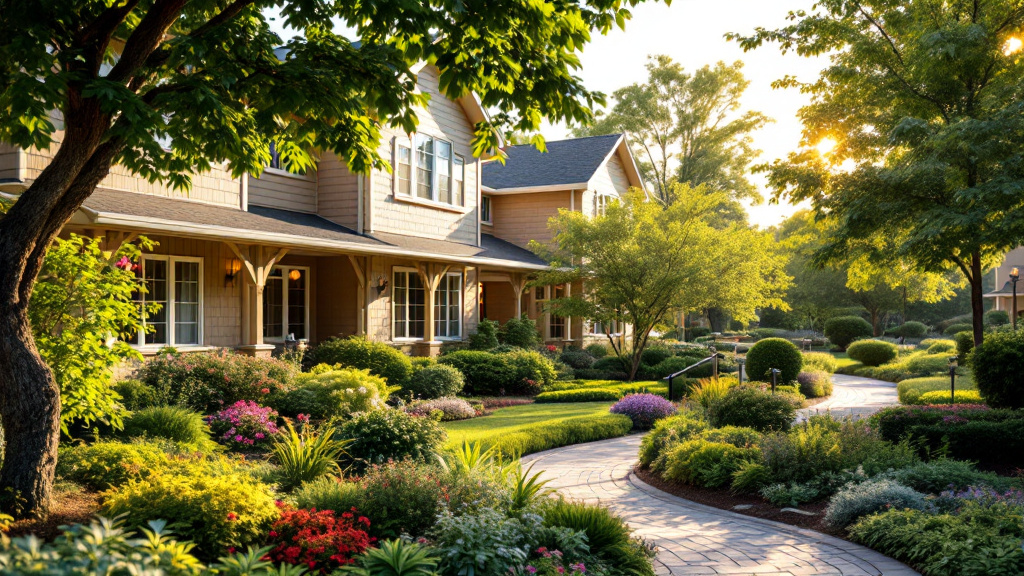How to Personalize a Senior Living Space for Comfort

Introduction: Embracing Comfort through Personalization
Personalizing a senior living space can transform an impersonal environment into a comforting sanctuary that reflects personal histories and preferences. This article delves into practical strategies for personalizing senior apartments, emphasizing the emotional and practical benefits of tailored living spaces. By exploring decor, lighting, and safety considerations, you can create a welcoming atmosphere that caters specifically to seniors' unique needs and aspirations.
Practical Tips for a Comfortable Living Space

What are some practical tips for creating a comfortable senior living space?
To create a comfortable senior living space, it’s essential to consider several factors that can enhance safety and well-being. First, decluttering is crucial. Removing unnecessary items not only helps prevent tripping hazards but also creates a more peaceful environment. Engage in regular tidying to maintain order and calmness.
Safety features should also be a priority. Installing accessible and non-slip flooring, grab bars, and ensuring adequate lighting can significantly reduce the risk of accidents. These features contribute to a secure atmosphere where seniors can move around confidently.
How can furniture layout aid mobility?
A well-thought-out furniture layout can facilitate easy movement, particularly for individuals using mobility aids like walkers or wheelchairs. Avoiding obstacles and arranging furniture in a way that creates clear pathways is vital. For instance, keep commonly used items easily reachable and avoid placing furniture too close together. Engage with furniture that allows for flexibility and ease of use.
What bedding options improve comfort?
Investing in comfortable bedding options is another important consideration. High-quality mattresses that provide support can dramatically influence sleep quality. Additionally, adjustable beds, which allow users to find their ideal position, can enhance comfort levels significantly. Soft, inviting bedding materials also create a relaxing ambiance that encourages rest.
Additional Tips for a Calming Senior Living Environment
Here are some more suggestions to forge a comforting atmosphere:
- Lighting: Incorporate layered lighting (ambient, task, accent) to ensure visibility and enhance mood.
- Color Choices: Soft, calming colors, such as pastels, create a tranquil environment, helping residents unwind.
- Personal Touches: Include personal items like family photos and cherished decor which evoke positive emotions and create a sense of home.
Personal Touches and Emotional Well-being

Role of Personal Items
Personal belongings such as family photographs, keepsakes, and treasured artwork can significantly impact the emotional well-being of residents in senior living environments. These items not only bring comfort but also create a warm atmosphere that feels like home. By displaying items that reflect their identities and cherished memories, seniors can maintain a sense of continuity in their lives even after transitioning to a new space.
Creating a Sense of Home
Incorporating personal touches into living spaces enhances comfort and security. Engaging seniors in planning their decor, including color choices and the arrangement of furnishings, fosters independence and comfort. Items that hold sentimental value can evoke positive feelings and memories, reinforcing their identity within a community setting. Functional furniture with accessible storage makes it easier to organize these personal items, ensuring that the living area remains neat and inviting.
Connecting with Past Experiences
The inclusion of personal items not only ignites fond memories but also encourages connection and conversation among residents. Creating themed areas, like a 'Memory Wall' filled with photographs and mementos from different stages of life, can spark storytelling and interaction, thereby enhancing community relationships. Furthermore, the emotional benefits of personal touches contribute to reduced stress and anxiety, ultimately fostering a more intimate and supportive living atmosphere.
Lighting and Accessibility: Essential Elements for Comfort

What are some strategies for optimizing lighting and accessibility in senior living spaces?
Optimizing lighting and accessibility in senior living spaces involves several key strategies.
Importance of Lighting
First, ensure well-lit areas, particularly in bedrooms and commonly used spaces. Using ambient lighting creates a warm environment, while task and accent lighting can highlight important areas, such as reading nooks. Incorporating adjustable lighting options is beneficial, allowing residents to tailor illumination to their activities and moods. Moreover, motion-sensor lights can enhance convenience by automatically lighting up pathways during the night, reducing the risk of falls.
Accessibility Features for Safety
In terms of safety, adding accessibility features is crucial. For example, consider integrating grab bars in bathrooms and hallways to aid mobility. Furniture should be chosen with functionality in mind—look for comfortable seating that supports easy transitions from sitting to standing. Ensuring that pathways are clear and unobstructed allows for smoother navigation, particularly for those using mobility aids.
Furniture Arrangements
When arranging furniture, consider space for mobility aids, like wheelchairs or walkers. A well-thought-out layout not only promotes easy navigation but also facilitates social interaction. By creating inviting conversation areas, seniors can engage more easily with family and friends. Regular assessment and updates to these arrangements can help adapt the space to the evolving needs of seniors, ensuring a safe, comfortable, and accessible environment.
The Role of Color in Enhancing Emotional Comfort

How does color therapy influence comfort in senior living spaces?
Color therapy can significantly influence comfort in senior living spaces by utilizing different hues to evoke specific feelings and moods. For instance, soft, warm colors like beige and gentle yellow create a cheerful and inviting atmosphere, making areas such as kitchens feel more pleasant during the morning routines.
Conversely, colors like soft blue promote a sense of calm but might not be suitable in the winter months when they can make a space feel overly cool. Green, renowned for its association with nature, is particularly effective for fostering relaxation and can be effectively incorporated throughout the year. Earthy tones like brown provide a cozy and safe environment, especially comforting during the fall season.
Additionally, vibrant colors such as red and orange can stimulate energy and enhance appetite, which is particularly advantageous in social dining areas. Nevertheless, it is crucial to balance these vibrant tones against softer shades to maintain tranquility in more private spaces, contributing significantly to emotional well-being in senior living environments.
Choosing appropriate colors
Selecting proper colors is essential in personalizing a living space while enhancing comfort. It's recommended to use softer hues in bedrooms and lounges to encourage relaxation, while brighter shades may be ideal for communal areas that thrive on energy and interaction.
Balancing vibrant and calm tones
Achieving a harmonious balance of vibrant and calm tones can create a versatile environment. Incorporating accent walls or decor pieces in cheerful colors can uplift moods without overwhelming the senses. This method not only personalizes the space but also contributes to the emotional satisfaction of the residents.
Incorporating Nature and Greenery
Benefits of Indoor Plants
Integrating plants into senior living spaces carries numerous benefits. They not only beautify the environment but also create a calming atmosphere. Being around greenery can help reduce stress and enhance overall emotional well-being, making residents feel more at home and connected to nature.
Low-maintenance Options
For seniors, selecting low-maintenance plants is crucial. Ideal options like spider plants, peace lilies, and succulents require minimal care while still adding beauty. These plants can thrive with limited watering and are perfect for residents who may not want to commit to extensive gardening.
Impact on Air Quality and Mood
Indoor plants, particularly air-purifying varieties, enhance air quality by filtering pollutants, which is especially beneficial for seniors’ health. Additionally, incorporating greenery can significantly uplift mood and promote a tranquil living environment. The visual appeal of plants fosters positive emotions, creating a serene sanctuary in senior living spaces.
| Plant Type | Maintenance Level | Air Quality Benefits |
|---|---|---|
| Spider Plant | Low | Removes formaldehyde and xylene |
| Peace Lily | Low | Filters out ammonia and benzene |
| Succulent | Very Low | Requires minimal water, adds aesthetics |
Organizing Small Spaces Effectively
How can multi-functional furniture help?
Multi-functional furniture is essential in senior living spaces, especially where maximizing limited areas is a priority. Consider items like lift-top coffee tables that offer both a surface for relaxation and hidden storage. Sofas with built-in compartments or ottomans that double as seating and storage can save space while providing functionality.
What are some effective decluttering techniques?
Decluttering is vital for maintaining an organized living environment. Regularly assessing belongings and determining what is essential can reduce clutter significantly. Use bins or stylish baskets to manage items in an easily accessible way. Implementing the ‘one-in, one-out’ rule can further help control the number of items within a space.
How can I maximize available space?
To make the most of available space, consider vertical storage options like shelving units that reach upward. This not only keeps belongings out of the way but also draws the eye upward, creating a perception of a larger area. Arranging furniture to create clear pathways helps maintain accessibility and flow, making it easier for seniors to navigate their homes without obstacles.
The Influence of Personal Decor and Art

Using Art to Personalize Space
Incorporating artwork into senior living spaces can significantly enhance personalization. By displaying paintings, photographs, or even sentimental items, residents can showcase their personality and interests. Thoughtfully chosen decor not only beautifies the environment but also reflects individual stories, creating a comforting and familiar atmosphere.
Memory and Conversation Evocation
Personal items like family photos and mementos have the power to evoke cherished memories and spark conversations. Creating a 'Memory Wall' can serve as a focal point in the living area, inviting interactions among residents and helping them feel anchored in their personal histories, reinforcing connections with their past.
Incorporating Crafts and Heirlooms
Engaging in arts and crafts can be therapeutic and fulfilling for seniors. Displaying their own creations or heirlooms connects them to their life stories, enhancing their emotional well-being. Additionally, incorporating these personal touches can foster pride and ownership of their living space, making it truly their own.
Safety and Comfort: Balancing Aesthetics and Function
Ensuring safety in decor choices
When personalizing a senior living environment, safety should be a top priority. This includes selecting decor and furniture that minimizes hazards. For example, opting for furnishings with rounded edges and materials that prevent slips can significantly reduce the risk of injury. Additionally, maintaining clear walkways free of clutter ensures safe navigation throughout the space.
Adaptive furniture design
Choosing functional furniture that combines style and practicality is essential for comfort and accessibility. Items like chairs with lumbar support, adjustable heights, and slip-resistant surfaces cater to seniors’ needs and enhance usability. Multi-functional pieces, such as sofas with storage, can save space while offering necessary functionality.
Universal design principles
Implementing universal design principles creates spaces that are accessible for all. This includes wider doorways, non-slip flooring, and strategically placed furniture to prevent confusion. Such elements not only enhance safety but also promote independence for seniors, allowing them to enjoy their personalized space with confidence.
Conclusion: A Harmonious Blend for a Personalized Home
By integrating personal touches, practical solutions, and carefully selected decor, senior living spaces can be transformed into personalized environments that emphasize comfort and well-being. This harmonious blend is essential for creating a reflective and engaging home, allowing seniors to feel connected and comfortable within their living spaces. Prioritizing these elements ensures that their new or existing homes continue to be places of familiarity, security, and joy, contributing to a more fulfilling living experience.
References
- Design Tips for Personalizing Your Senior Living Space
- Refresh Your Space at Senior Living with These 10 Decor Ideas
- How to Personalize Your Senior Living Space
- Creating a Safe, Comfortable Home in Senior Living
- Decorating Your Space - Personalizing Your Senior Living Residence
- How To Make Senior Living Feel Like Home: Tips and Ideas
- Decorating Tips for Senior Adult Living Spaces









































.jpg)







.jpg)





.jpg)
.jpg)
.jpg)
.jpg)
.jpg)
.jpg)
.jpg)
.jpg)



.jpg)

.jpg)
.jpg)
.jpg)
.jpg)


.jpg)
.jpg)
.jpg)
.jpg)

.jpg)
.jpg)
.jpg)


.jpg)
.jpg)










.jpg)
